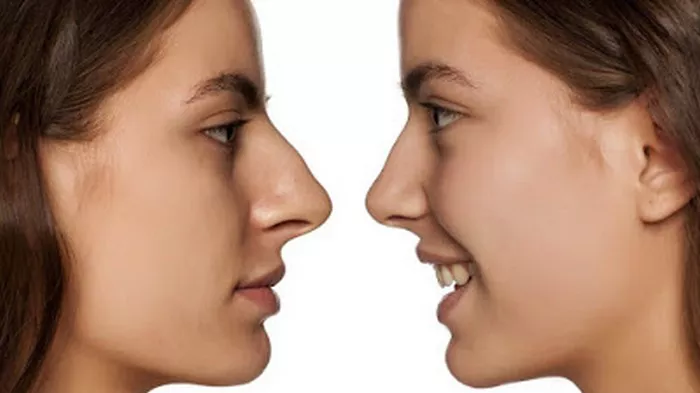Septoplasty is a surgical procedure that is performed to correct a deviated septum. The septum is the wall that separates the two nostrils, and when it is deviated, it can cause breathing problems and other issues. During septoplasty, the surgeon will straighten the septum to improve airflow. One common question that patients have is how long does teeth pain last after septoplasty. In this article, we will discuss the answer to this question and provide tips on how to manage teeth pain after septoplasty.
What Happens During Septoplasty?
During septoplasty, the surgeon will make incisions in the lining of the nose to access the septum. They will then straighten the septum and remove any excess tissue that is causing the deviation. The incisions will be closed with dissolvable sutures, and the patient will be given a splint to wear for a few days to help the nose heal in the correct position.
Teeth Pain Last After Septoplasty
Teeth pain is a common side effect of septoplasty. The pain is caused by the swelling and inflammation that occurs after surgery. The nerves that supply the teeth are located close to the nasal cavity, and when the nose is swollen, it can put pressure on these nerves, causing pain in the teeth.
How Long Does Teeth Pain Last After Septoplasty?
The length of time that teeth pain lasts after septoplasty can vary from patient to patient. In general, most patients experience teeth pain for a few days to a week after surgery. However, some patients may experience teeth pain for several weeks after surgery. The severity of the pain can also vary from mild discomfort to severe pain.
Factors That Affect Teeth Pain After Septoplasty
Several factors can affect the duration and severity of teeth pain after septoplasty. These include:
Extent of the Surgery
The more extensive the surgery, the longer the recovery time and the more likely it is that patients will experience teeth pain after septoplasty.
Type of Anesthesia
The type of anesthesia used during surgery can also affect the duration and severity of teeth pain after septoplasty. General anesthesia, which is used in most cases, can cause more swelling and inflammation than local anesthesia, which may lead to more teeth pain.
Patient’s Age
Younger patients tend to recover more quickly than older patients, and may experience less teeth pain after septoplasty.
Patient’s Health
Patients who are in good health and do not have any underlying medical conditions tend to recover more quickly and experience less teeth pain after septoplasty.
Tips for Managing Teeth Pain After Septoplasty
To manage teeth pain after septoplasty, there are several things that patients can do. Here are some tips:
Take Pain Medication
Your surgeon will prescribe pain medication to help manage the pain after septoplasty. Be sure to take the medication as directed to keep the pain under control.
Use Ice Packs
Applying ice packs to the cheeks can help to reduce swelling and relieve pain after septoplasty. Use a cold compress for 10-15 minutes at a time, several times a day.
Use a Nasal Spray
Your surgeon may prescribe a nasal spray to help reduce swelling and inflammation in the nose after septoplasty. Be sure to use the nasal spray as directed.
Avoid Hot or Cold Foods
Hot or cold foods can aggravate teeth pain after septoplasty. Avoid hot or cold foods for the first few days after surgery.
Rest and Relax
Resting and relaxing can help to reduce swelling and inflammation after septoplasty. Try to avoid strenuous activity for the first few days after surgery.
Follow Up with Your Surgeon
It is important to follow up with your surgeon after septoplasty to ensure that your recovery is progressing as it should. Attend all scheduled appointments and contact your surgeon if you have any concerns or questions.
When to Contact Your Surgeon
If your teeth pain lasts longer than a week after septoplasty, or if the pain is severe, be sure to contact your surgeon. They may need to examine your nose to ensure that there are no complications.
Complications That Can Cause Teeth Pain After Septoplasty
In rare cases, complications can arise after septoplasty that can cause teeth pain. These include:
Infection
Infections can occur after septoplasty and can cause pain in the teeth. Signs of infection include fever, increased pain, and discharge from the nose.
Hematoma
A hematoma is a collection of blood that can occur after surgery. If a hematoma develops in the nose, it can put pressure on the teeth and cause pain.
Sinusitis
Sinusitis is an inflammation of the sinuses that can occur after septoplasty. If sinusitis develops, it can cause pain in the teeth.
Conclusion
Teeth pain is a common side effect of septoplasty, but it is usually temporary. The length of time that teeth pain lasts after septoplasty can vary from patient to patient, but most patients experience pain for a few days to a week after surgery. To manage teeth pain after septoplasty, patients can take pain medication, use ice packs, use a nasal spray, avoid hot or cold foods, rest and relax, and follow up with their surgeon. If you have any concerns about your recovery after septoplasty, be sure to contact your surgeon.


